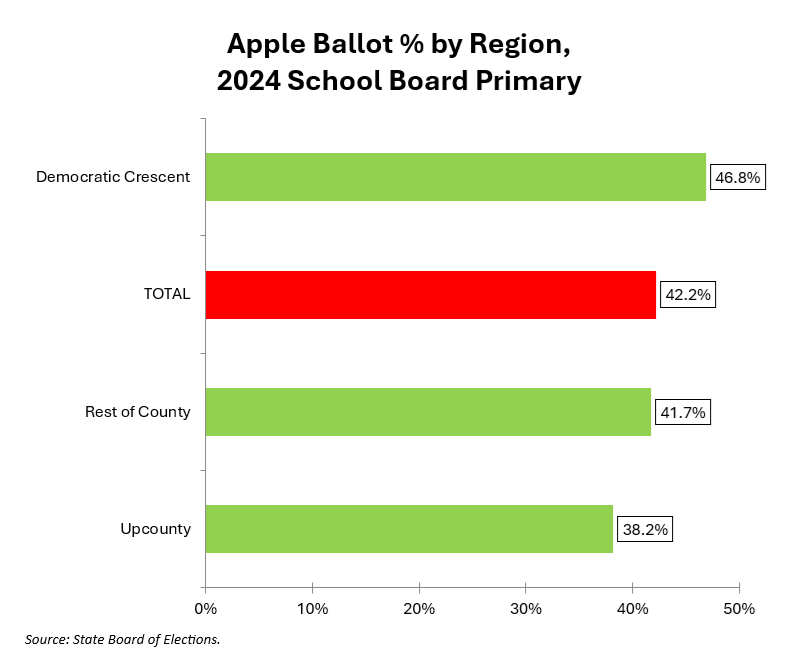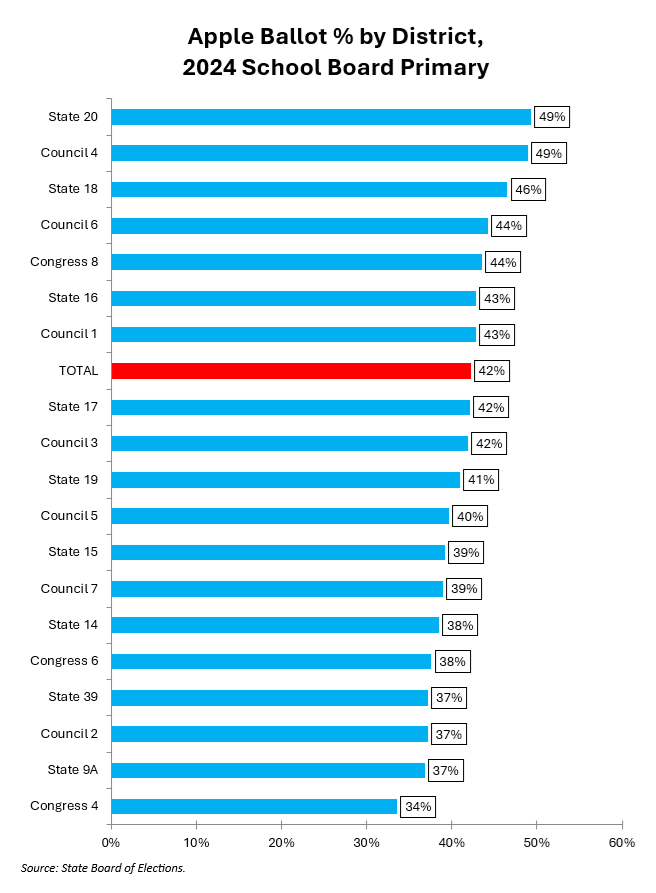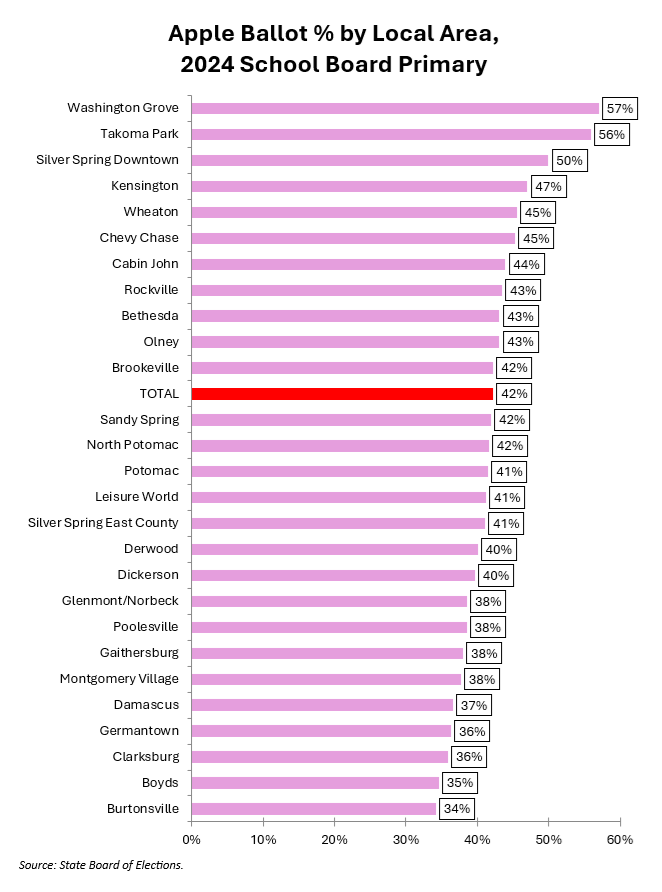By Adam Pagnucco.
Part One revealed that the precinct performances of the three school board candidates on MCEA’s Apple Ballot – Rita Montoya (At-Large), Natalie Zimmerman (District 2) and Laura Stewart (District 4) – were correlated. That makes sense since the Apple was by far the most influential factor operating in the primary and none of these candidates – or any of the other ones – had the money to differentiate themselves. Now let’s look at geography.
In this post, we take the combined votes of the three Apple candidates and divide them by the total votes cast for school board in each precinct to derive an Apple percentage. Here is what that Apple percentage looks like by county region. See my methodology post for definitions.

The Apple candidates performed best in the Democratic Crescent, the politically progressive, high-turnout areas that sent Jamie Raskin to Congress. They performed worst in Upcounty, which is politically more moderate and has lower turnout. This bears some resemblance to the victory geographies of County Executive Marc Elrich and U.S. Senate candidate Angela Alsobrooks, although ironically, Alsobrooks was not on the Apple Ballot in the primary.
Now let’s look at Apple percentage by congressional, state and council district.

The Apple’s best districts are located in and near Takoma Park and Downtown Silver Spring (State 20 and Council 4), Chevy Chase (State 18) and Kensington (State 18 and Council 4). This is the heart of the progressive Democratic Crescent. The Apple’s worst districts tend to be located in Upcounty. This confirms the region chart above.
Finally, the chart below shows Apple percentage by local area. Again see my methodology post for definitions.

With the exceptions of Washington Grove and Burtonsville, the Apple performed best in progressive Downcounty areas and worst in most of Upcounty.
Why are we seeing this pattern? Part of the reason is probably related to the geography of MCEA’s poll coverage, as well as any poll coverage by the Apple Ballot candidates themselves. However, that can’t be the whole story as almost half of the ballots were cast by mail.
We will examine one potential factor impacting Apple performance next.
